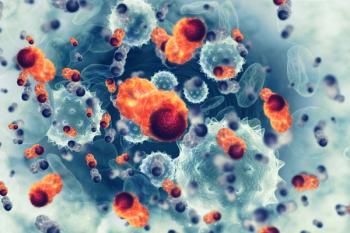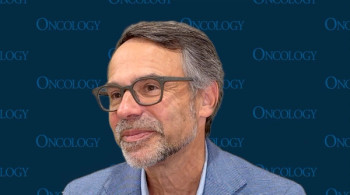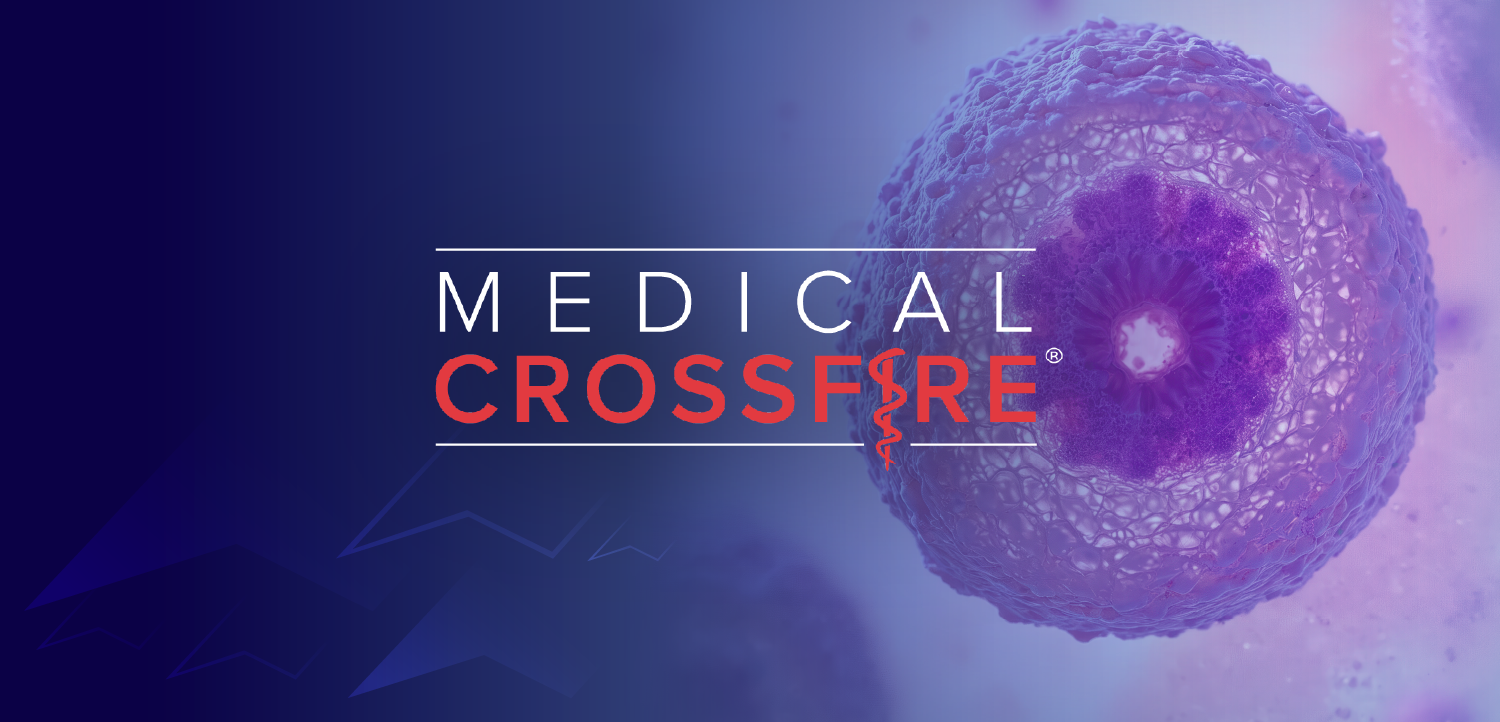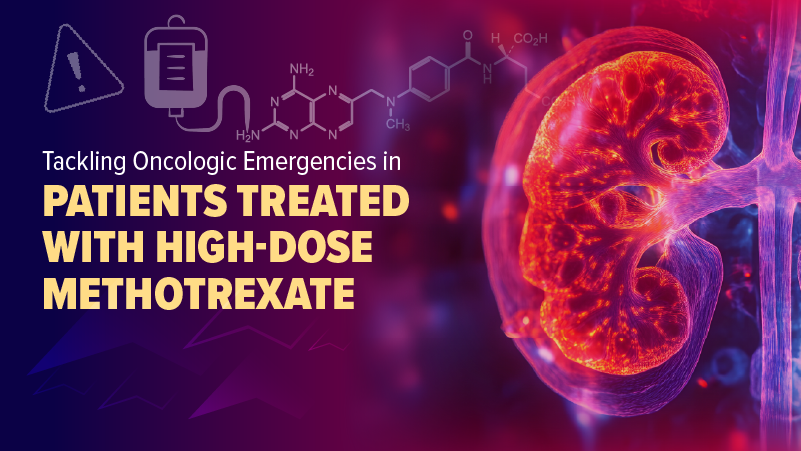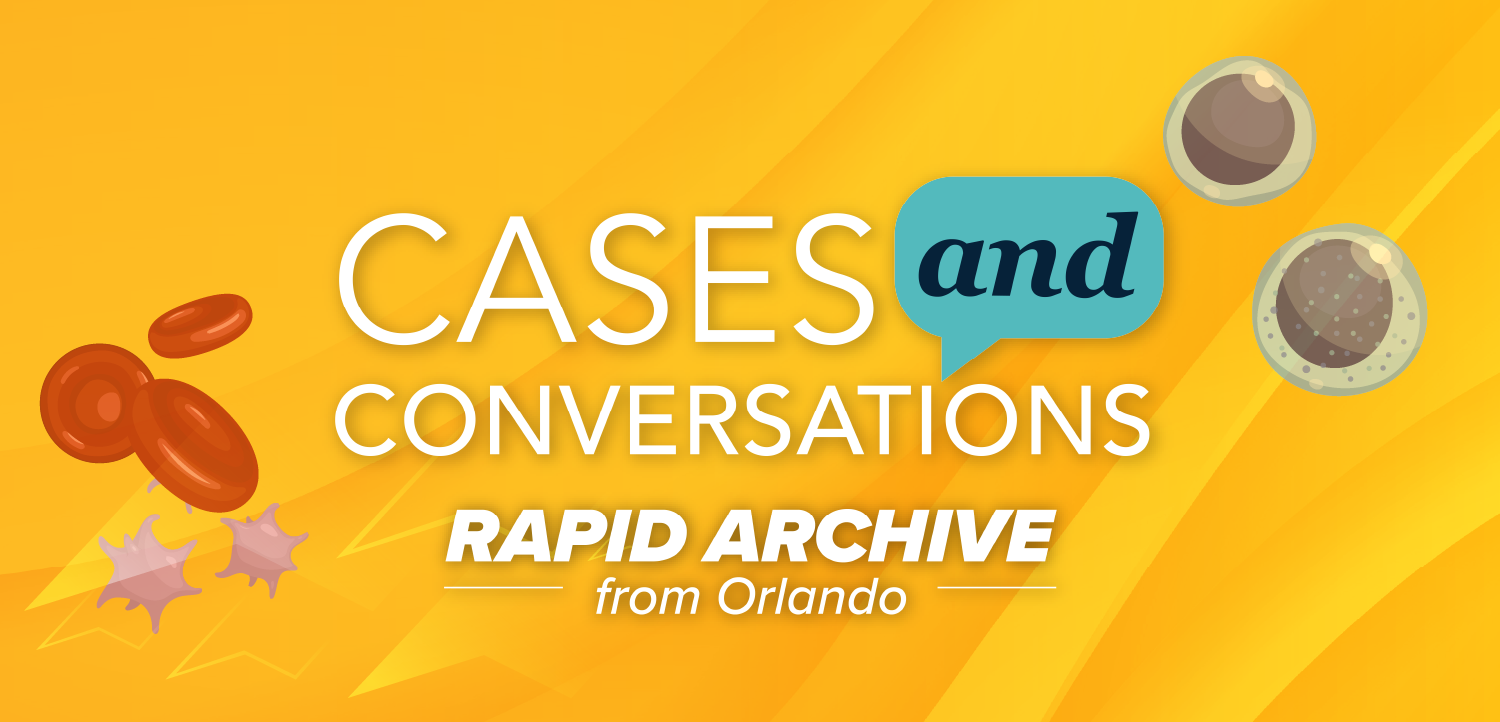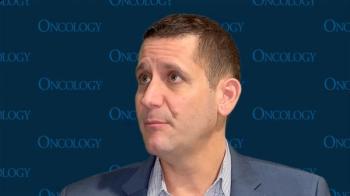
TRBC1-Directed CAR T-Cell Therapy Exhibits Preliminary Efficacy in PTCL
AUTO4 CAR T cells plus fludarabine and cyclophosphamide was well tolerated in patients with relapsed or refractory peripheral T cell lymphoma.
TRBC1-directed autologous CAR T-cell therapy (AUTO4) elicited preliminary activity in a small cohort of patients with relapsed or refractory peripheral T cell lymphomas (PTCL), according to results from the phase 1/2 LibraT1 trial (NCT03590574) published in Nature Medicine.1
In patients eligible for efficacy analysis (n = 9), after a median follow-up of 13.8 months, the best overall response rate (ORR) was 66.6% (n = 6), with 4 patients attaining a complete metabolic response (CMR) and 2 patients achieving a partial response (PR). Additionally, at the highest dose level of 450 x 106 CAR T cells, all 4 patients attained an objective response, with 3 CMRs and 1 PRs.
Among the 4 patients who had attained a CMR in the first month, 1 received the 25 x 106 dose and later had a relapse during month 2, and 3 received the 450 x 106 dose. Of the 3 patients who attained a CMR at 1 month and were given the 450 x 106 dose, 2 were in ongoing remission at months 15 and 18, and the third had a relapse at month 3 after sustaining a CMR at day 28.
“The preliminary efficacy and the ongoing responses reported in this phase 1 study are encouraging, with most responses observed at the highest AUTO4 dose: 3 of 4 patients who received the 450 × 106 CAR T cells (highest dose) achieved CMR at month 1, and 2 of them remain in CMR beyond 18 months, suggesting a potential for AUTO4 CAR T to induce long-lasting remissions in a proportion of patients,” Kate Cwynarski, MD, chair of the UK T Cell Lymphoma Working Group and associate professor of hematology-oncology at the University College of London, wrote in the publication with study coinvestigators.1 “[O]ur preliminary data support further development of AUTO4 CAR T cell therapy.”
Patients with relapsed/refractory TRBC1–positive PTCL enrolled on the phase 1/2 trial to receive AUTO4, undergoing 5 steps encompassing the dose-escalation and dose-expansion phases. Initially, patients were screened with a TRBC1 eligibility inclusion assessment. Then, patients underwent a leukapheresis stage whereafter AUTO4 was manufactured.
Then, patients underwent a preconditioning stage consisting of lymphodepleting treatment with 30 mg/m2 of fludarabine (Fludara) on days –6 to –3 and 500 mg/m2 of cyclophosphamide on days –5 and –6 prior to AUTO4 infusion. Additionally, AUTO4 was given intravenously as 1 infusion across 4 dose levels, either 25 x 106 cells, 75 x 106 cells, 225 x 106 cells, or 450 x 106 cells on a rolling 6 design. Furthermore, a follow-up stage lasted for 24 months after the infusion of the last patient or upon disease progression or withdrawal of consent.
Of the 10 patients on the trial, 7 were male, and the median patient age was 55 years (range, 34-63). A total of 4 patients received the 450 x 106 dose, 1 patient received the 225 x 106 dose, 2 received the 75 x 106 dose, and 3 received the 25 x 106 dose. A total of 5 patients had PTCL not otherwise specified (PTCL-NOS), 4 had angioimmunoblastic T cell lymphoma (AITL), and 1 had anaplastic large cell lymphoma (ALCL).
Patients had a median of 2 prior lines of therapy (range, 1-5). A total of 7 did not have prior autologous stem cell transplantation (ASCT), and 8 patients received prior bridging therapy.
The phase 1 primary end points of the study included frequency of dose-limiting toxicities (DLTs) within 28 days of AUTO4 infusion and grade 3 or higher toxicity occurrence within 60 days of infusion. Secondary end points included overall response rate by LuganoPET-CT criteria.
Patients 18 years and older with a confirmed diagnosis of PTCL-NOS, AITL, or ALCL; confirmed relapsed/refractory disease after at least 1 prior line of treatment; an ECOG performance status of 0 or 1; and adequate bone marrow function were eligible for enrollment on the trial.2
Any-grade cytokine release syndrome (CRS) was observed in 4 of 10 patients, all of whom received the 450 x 106 dose.CRS events had a median onset of 1 day (range, 1-5) and lasted for a median duration of 2 days (range, 1-10). One patient experienced grade 3 CRS on day 8, resolving within 3 days. No immune cell-associated neurotoxicity syndrome (ICANS) or DLTs were observed.
References
- Cwynarski K, Iacoboni G, Tholouli E, et al. TRBC1-CAR T cell therapy in peripheral T cell lymphoma: a phase 1/2 trial. Nat Med. 2025;31:137-143. doi:10.1038/s41591-024-03326-7
- Phase I/II study evaluating AUTO4 in patients with TRBC1 positive T cell lymphoma. ClinicalTrials.gov. Updated September 25, 2024. Accessed February 18, 2025. https://tinyurl.com/43ddz6ms
Newsletter
Stay up to date on recent advances in the multidisciplinary approach to cancer.


